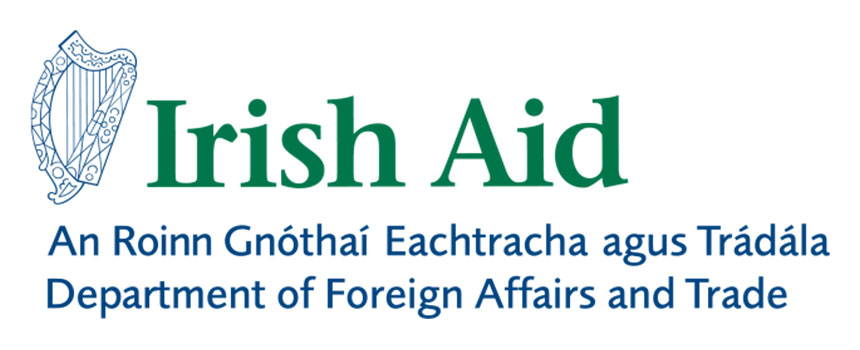The Crisis: What Happened?
“History, despite its wrenching pain, cannot be unlived, but if faced with courage, need not be lived again.” – Maya Angelou
Overview
The Crisis: What Happened? explores the causes of the current financial crisis, from the subprime lending in the US to its relationship to the Global and Shadow banking systems. Here we explore how and why the financial crash happened and how it impacts the lives of people all around the world. We ask what caused the global financial crisis, and what are its impacts on people’s lives in the Global South and North?
Learning Outcome
That, using their learning to date, participants will learn to critique and analyse the impact of the global financial crisis on people’s lives around the world.
Table of Contents
- Resources
- 1. Article: The Crisis Won’t Go Away By Itself – Terry McDonagh
- 2. Video: Picketty’s ‘Capital’ in three minutes
- 3. Article: The Global Financial and Economic Crisis and the South: Impact and Resources
- 4. Video: Crisis of capitalism – David Harvey
- 5. Report: The true cost of austerity and inequality – Oxfam
- 6. Video: Why austerity doesn’t work – Mark Blyth
- 7. Video: ‘Commons and Enclosures’ – interview with Peter Linebaugh
- 8. Debating Austerity in Ireland: crisis, experience and recovery
- 9. Blog: What caused the global financial crisis and what are its impacts on people’s lives in the Global North and South? – Andy Storey
- Discussion Questions
- Learning Journal
- Extra Resources
Resources
1. Article: The Crisis Won’t Go Away By Itself – Terry McDonagh
In this 2015 Article from LookLeft magazine Terry McDonagh, Professor of Economics at NUI Galway, argues that Ireland has not turned the corner. At best it is on the upside of a long, slow, shallow curve due to the crisis of capitalism.
2. Video: Picketty’s ‘Capital’ in three minutes
BBC Newsnight Policy Editor Chris Cook condenses Thomas Piketty’s landmark book on inequality, Capital in the Twenty-First Century, into a three minute video.
3. Article: The Global Financial and Economic Crisis and the South: Impact and Prospects
While all of us are familiar with the effects of the recent economic downturn in our own countries, perspectives on the crisis from the world’s poorest countries can be hard to come by. This resource does just that, summarising events in the Global South.
Read more
4. Video: Crisis of capitalism – David Harvey
In this engaging and imaginatively illustrated video, Marxist sociologist David Harvey analyses the crisis of capitalism in the wake of the financial crisis.
5. Report: The true cost of austerity and inequality – Oxfam
This case study, looking at inequality and austerity in Ireland is an extract from Oxfam’s 2013 ‘A Cautionary Tale’ report on the impact of austerity in Europe.
6. Video: Why austerity doesn’t work – Mark Blyth
Mark Blyth of the Watson Institute looks at why austerity is never experienced equally across a society.
7. Video: ‘Commons and Enclosures’ – interview with Peter Linebaugh
In this interview, historian Peter Linebaugh speaks about the principles of ‘the commons’, the practice of enclosure, and considers these phenomena in terms of recent history.
8. Debating Austerity in Ireland: crisis, experience and recovery
Ten years on, was austerity worth it? The austerity that followed the recent economic and financial crisis has led to impassioned debates across the social sciences and the public at large. Although Ireland was not its only victim, the depth of the interacting economic, banking and budgetary crisis has meant that the level of public interest has been especially intense. Among the hotly debated questions: what is austerity? Was it necessary? What have been its consequences? One of the defining features of the debate to date has been its tendency to polarise opinion and adopt a one-dimensional perspective. This book challenges us to adopt a more nuanced approach to understandings of austerity, and by extension the path to recovery.
9. Blog: What caused the global financial crisis and what are its impacts on people’s lives in the Global North and South? – Andy Storey
“The roots of the crisis lie in the growing trend towards making money through financial speculation rather than through productive investment. By 2006, over 40% of all US corporate profits were coming from such speculation and similar trends were apparent in other countries”…
Read more
Discussion Questions
- Before reading the resources, how have you typically heard public figures and the media explain what the crisis is and how it happened?
- What aspects of the topics explored in this module concern you more than others? Why?
- Terry McDonough talks about cycles of depression coming and going. Are crises the consequence of poor regulation, or are they characteristics of the predominant economic model?
- Peter Linebaugh speaks about the ‘feminisation of poverty’. What do you think he means? Do you agree?
- What roles do capital and property play in the narrative being presented?
- What are the other crises of capital and property currently taking place?
Learning Journal
- What is the impact of austerity on my community or society?
- What are the links between the experiences of my community and society, and the experiences of communities in the global South?
Extra Resources
| Corporate Watch | False Dilemmas: A Critical Guide to the Euro Zone Crisis (download for free) | |
| Centre for Popular Economics | Economics for the 99% – 2014 (PDF) | |
| Gowan, Peter | Crisis in the Heartland – New Left Review (2009) | |
| Treanor, Jill | Article: Banks fined record €1.7bn over benchmark interest rate rigging cartel – The Guardian 2013 | |
| Mary Poppins | Video: Fidelity Fiduciary Bank | |
| Bird & Fortune | Video: The Subprime crisis. A humorous take on the attitude of the investment community | |
| Jonathan Jarvis | Video: The Crisis of Credit Visualised. A nifty video that explains how the credit crisis occurred in 2008. It also explains how banks make money, what a ‘Triple A Rating’ is, and how the credit crisis flows in a cycle. | |
| The New Economics Foundation | Briefing: REBOOT – How did we get here? This two page document gives a simple explanation of how the economic crisis occurred, and offers some potential solutions. |


